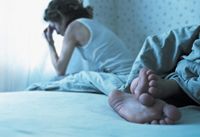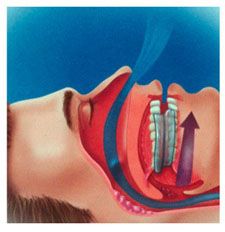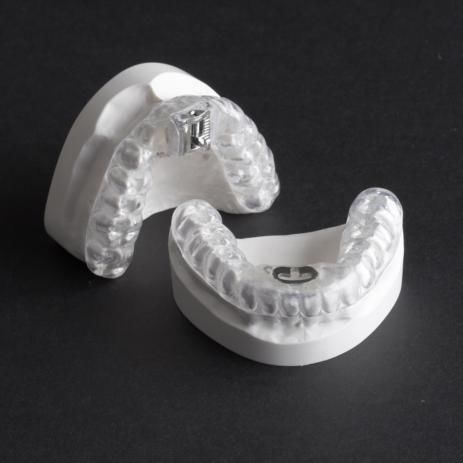About snoring

Are you one of the 45% of adults who snore occasionally or one of the approximately 25% of adults who snore regularly? Snoring and its associated problem of sleep apnoea(temporary stop of breathing), are a growing problem in many countries. In Sweden 4% of the men and 2% of women in the age group 39-79 years are affected by sleep apnoea witch could cause severe health implications.
( high blood pressure, cardio vascular diseases, stroke, depression, and of course tiredness.)
This means that snoring is a problem not only for people sleeping in the same room but also for the snorer himself.
The noisy sound of snoring occurs when there is an obstruction to the free flow of air through the passages at the back of the mouth and nose. This area is the collapsible part of the airway where the tongue and the upper throat meet the soft palate and uvula, (the dangling piece of tissue at the back of your throat). Snoring occurs when these structures vibrate and strike each other during breathing. Apnoea occurs when the airway is totally obstructed by these tissues, and can last from 10 seconds to a minute. This could happen hundreds of times every night and causes severe stress to the body.
Oral appliances are worn in the mouth to treat snoring and Obstructive Sleep Apnea (OSA). These devices are similar to orthodontic retainers or sports mouth guards. Oral Appliance Therapy involves the selection, design, fitting and use of a custom-designed oral appliance that is worn during sleep. With an oral appliance, throat tissues move out of your air passage, allowing air to flow freely through the throat. Oral appliances may be used alone or in combination with other means of treating OSA. These means include general health measures (avoiding alcohol and sleeping pills), weight management, surgery, and CPAP. (Continuous Positive Airway Pressure- a machine that via a mask blows air into the airway)
.
The first piece of advice to give to a person who snores would be too loose weight if obese, and to moderate alcohol intake. The second piece of advice would be to change the position when sleeping. As snoring gets worse when lying on the back you could try with a tennis ball or tooth brush fixed to the backside of the pyjamas.
If these measures do not have the desired effect the next step would be an oral device that pushes the jaw forward to open the airway.

There are several devices on the market and as I am a snoring dentist I have tried different sorts that all have been difficult to use as they immobilise the jaw in a very uncomfortable way and therefore easily cause gagging.
I have now finally found the device TAP (Thornton Adjustable Positioner) constructed by the American dentist Keith Thornton (www.amisleep.com) which is the first device that has helped me in a significant way. My wife is not disturbed by my snoring any more and I can really feel that my breathing is improved during the night which results in a better sleep.

This device has to be custom made and fitted by your dentist. The cost is higher than for other devices but this one is so much better that the difference in cost is justified.
If an oral device does not help, (or is not possible due to lack of teeth), the next step would be to contact a physician specialising in the area who would investigate the best way to improve the breathing . Normally it will be some kind of CPAP device with the disadvantages of wearing a mask and being connected to a machine. Surgery in the palate is rarely used nowadays as it is an irreversible treatment with a low success rate.